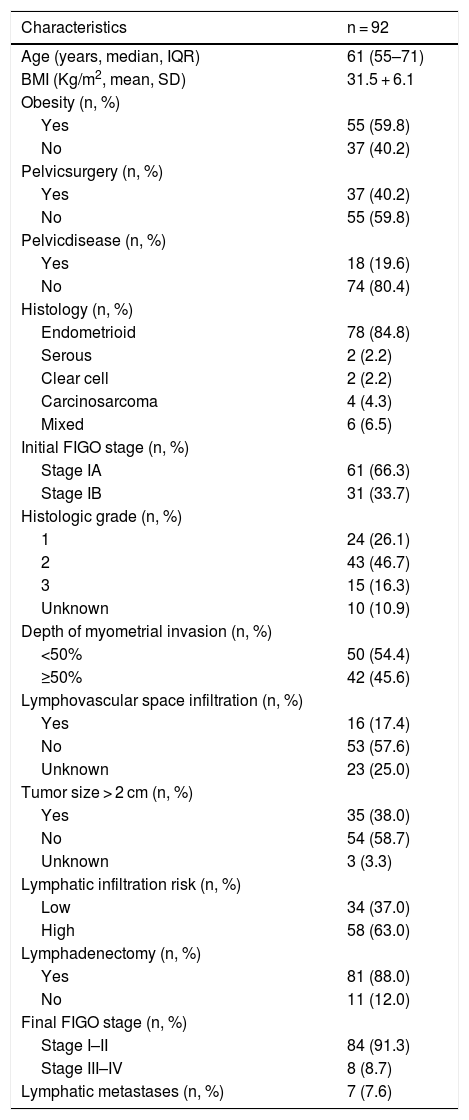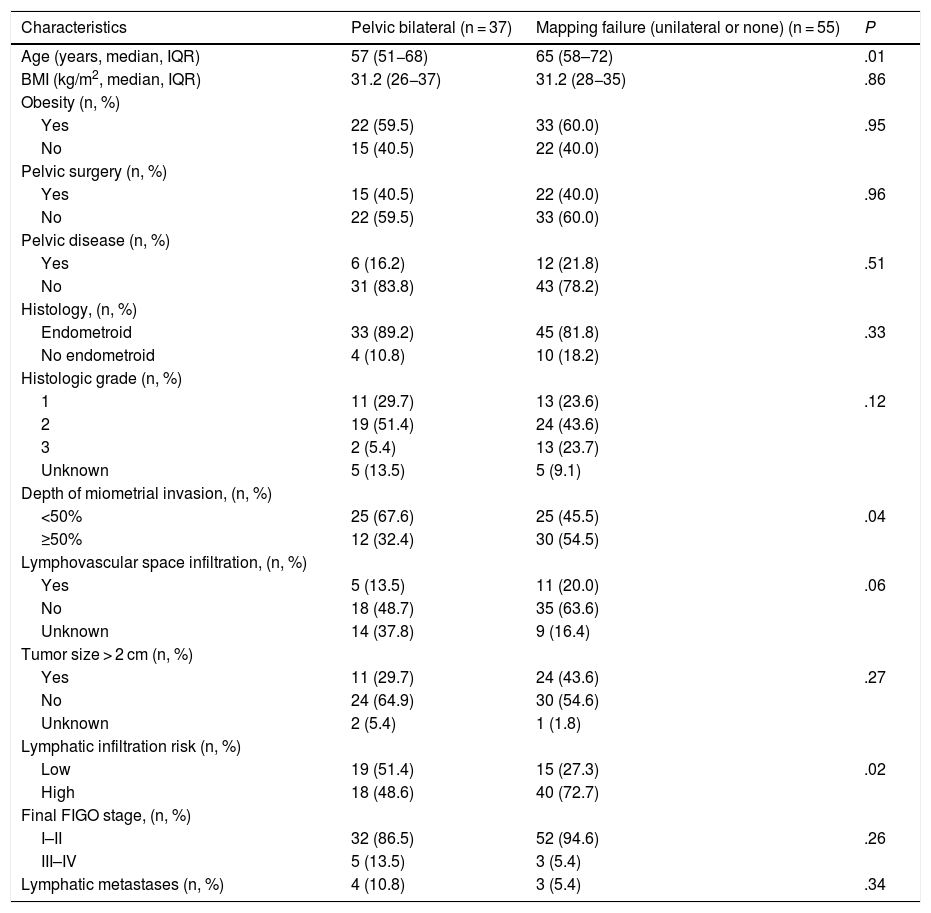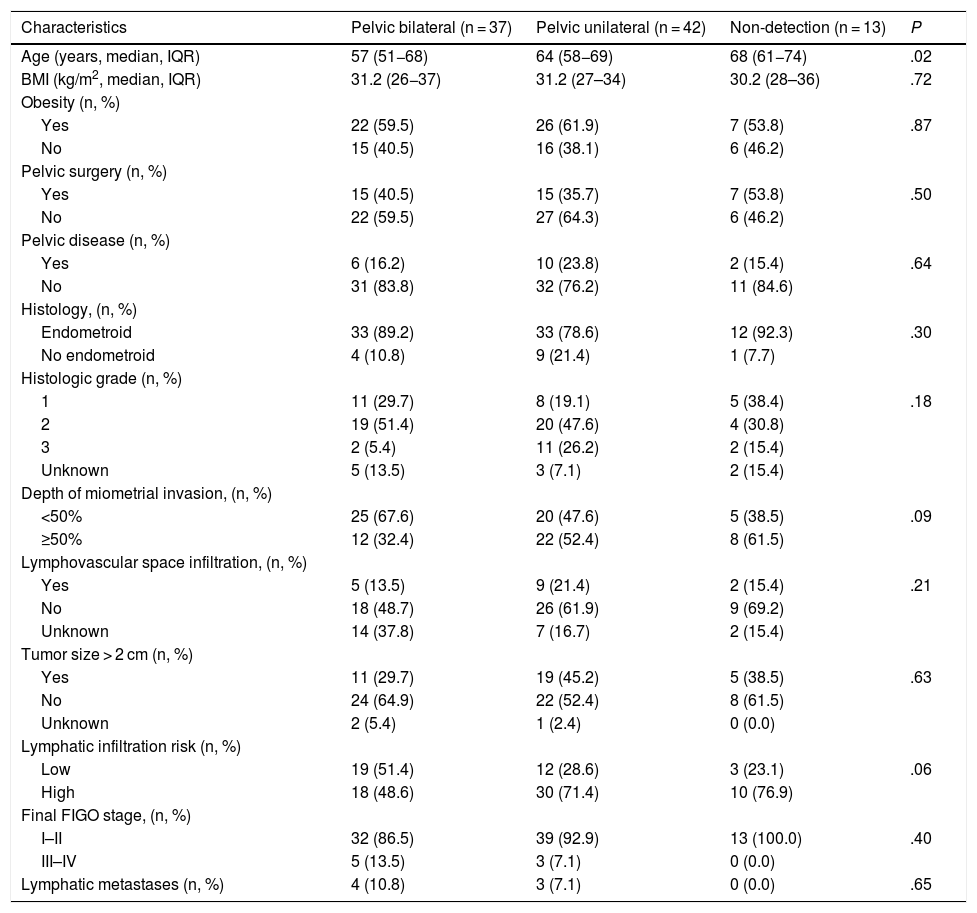To evaluate the effect of technical problems and patient characteristics on sentinel lymph node (SLN) scintigraphic detection and mapping success in early stages of endometrial cancer (EC).
MethodsPatients with clinical early stage EC (IA-IB) underwent SLN mapping using technetium-99m-nanocolloid, between September 2011 and February 2020 were included. There were excluded cases with technical problems, 92 patients were included for the analysis of the diagnostic performance and the relation of mapping failure (pelvic unilateral or not detected SLN) with patient (age, body mass index, previous pelvic disease or surgery) and disease characteristics (histology, grade, myometrial invasion, lymphovascular space infiltration, tumor size, and lymphatic infiltration risk).
ResultsThe overall detection rate was 79%. Lymph node metastases were diagnosed in 7 patients. Age (P = .01), depth of myometrial invasion ≥50% (P = .04) and high risk of lymphatic infiltration (P = .02) were positively associated with mapping failure. In multivariate analysis, age was significantly associated with mapping failure [odds ratio = 1.63, 95%CI: 1.06–2.50; P = .027].
ConclusionsAge, depth of myometrial invasion and high risk of lymphatic infiltration were the factors associated with higher mapping failure.
An individualized injection technique, optimizing the methodology, could minimize the detection failures.
Evaluar el efecto de los problemas técnicos y de las características de las pacientes, en la detección gammagráfica del ganglio centinela (GC), y el éxito del mapeo en estadios precoces del cáncer endometrial (CE).
Material y métodosSe incluyeron pacientes con estadio precoz de CE (IA-IB) sometidos a mapeo de GC empleando nanocoloides de 99mTcentre septiembre de 2011 y febrero del 2020. Fueron excluidos los casos con problemas técnicos, 92 pacientes se incluyeron en el análisis para valorar la rentabilidad diagnostica y la relación con el fallo en elmapeo linfático (pélvico unilateral o no detección del GC) con las características del paciente (edad, índice de masa corporal, enfermedad o cirugía pélvica previas) y de la enfermedad (histología, grado, invasión miometrial, infiltración del espacio linfovascular, tamaño tumoral y riesgo de infiltración linfática).
ResultadosLa tasa de detección global fue del 79%. En 7 pacientes se detectaron metástasis ganglionares. La edad (P = ,01), profundidad de invasión miometrial ≥50% (P = ,04) y el alto riesgo de infiltración linfática (P = ,02) se asociaron de forma positiva con el fallo linfático. En el análisis multivariante, la edad se asoció significativamente con el fallo del mapeo [odds ratio = 1,63; IC:95%: 1,06−2,50; P = ,027].
ConclusionesLa edad, profundidad de invasión miometrial y el alto riesgo de infiltración linfática fueron los factores asociados con mayor fallo de mapeo. Una técnica de inyección individualizada, optimizando la metodología, podría minimizar los fallos de detección.
Article

Revista Española de Medicina Nuclear e Imagen Molecular (English Edition)












